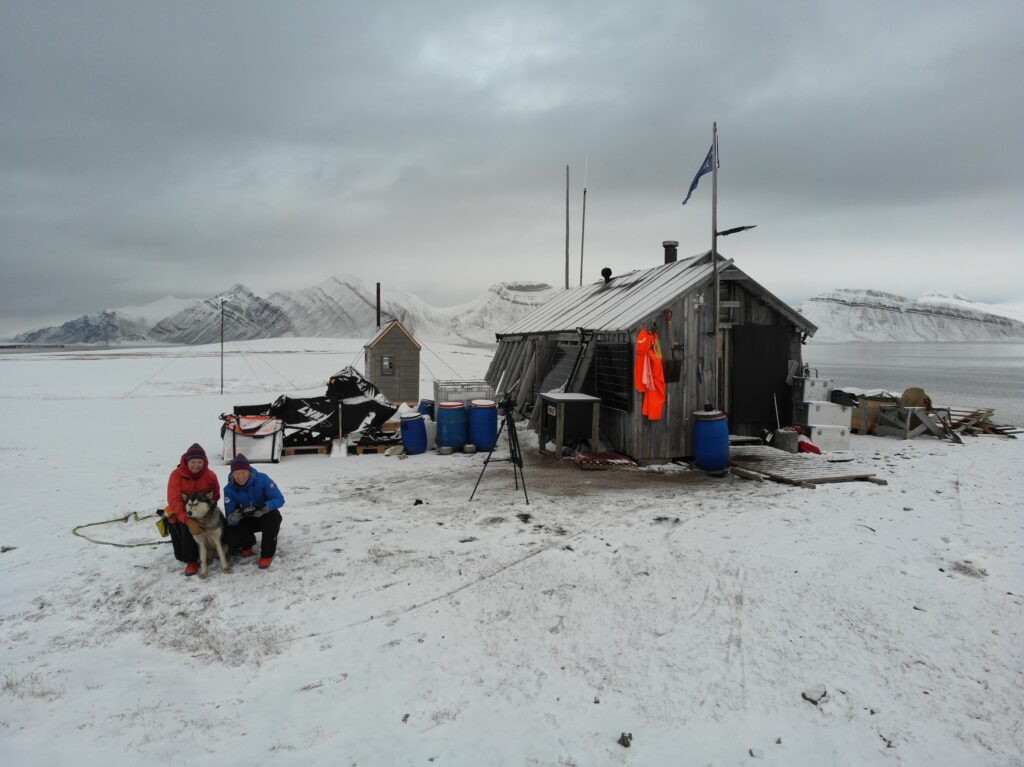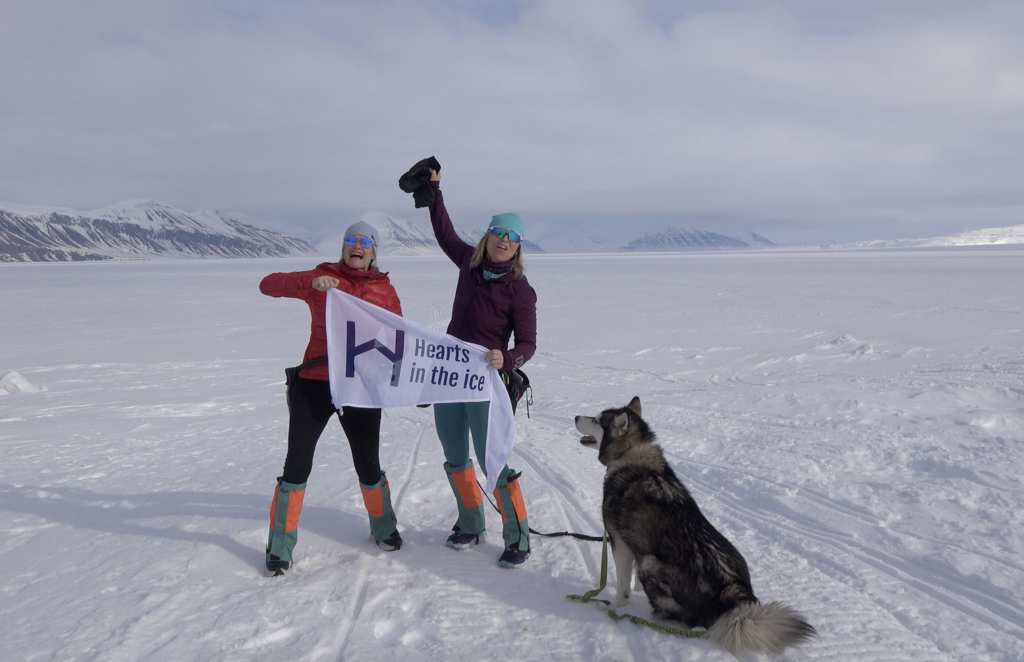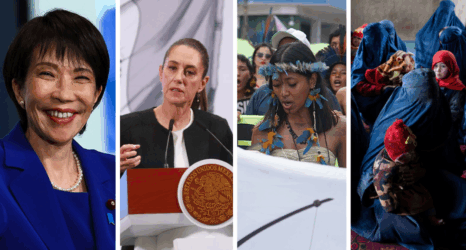Sunniva Sorby and Hilde Fålun Strøm have returned to overwinter in the high Arctic for the second time, bringing groundbreaking scientific research to prestigious institutions while raising awareness about climate change.

Quarantine these past (seemingly endless) months has been challenging for everyone—at the very least because being stuck at home alone or with the same few family members can get old very quickly.
Here to shatter your understanding of a hardcore quarantine are Sunniva Sorby of Canada and Hilde Fålun Strøm of Norway. These two women have spent quarantine together in an historic trappers cabin in the high Arctic without electricity nor running water.
Quarantine for them has meant more than socially-distant walks; it has meant complete and utter isolation—not just from their friends and family, but 140 kilometers from civilization itself. And they are doing some truly groundbreaking things with their time.
Sorby and Strøm practice citizen science, which is, as they describe it, “any project that involves public collaboration in contribution to scientific research.” As citizen scientists, Sorby and Strøm are essentially regular people (i.e. non-professional scientists) who work with organizations in bolstering scientific research—though that is about as far as “regular” goes to describe these two incredible women.
Among their many individual accomplishments, this past year, the pair became the first women to overwinter alone—or spend the winter—in the Arctic, without men.
“It was time for us to rewrite history,” Sorby told Ms., “to break with tradition up here and to show and share that we are strong, capable, resourceful and successful without men.”
The pair arrived at Bamsebu, the aforementioned remote cabin in the Norwegian archipelago of Svalbard, in October of 2019, set out to conduct critical research on climate change and the Polar regions.
The year they spent at Bamsebu in the 2019-2020 expedition produced invaluable data on the environment, phytoplankton and the aurora borealis. The data has contributed to projects and research with prestigious organizations such as the British Columbia Institute of Technology (BCIT), the Scripps Institution of Oceanography and NASA.
The initial expedition was a key component of their project, Hearts In The Ice (HITI), which they started in 2017 to “raise awareness about climate change in our polar regions and to inspire a global dialogue around it.” Sorby told Ms.:
“As two women who have spent decades exploring and working in the Polar Regions we felt that we could add value to our understanding of climate change and also test the limits of our skills and abilities by over-wintering, collaborating with scientists and being keen observers to the changes up here in the Arctic.”
Borge Damsgard, the director of the United Nations International School (UNIS) and another one of their professional partners, says:
“Hearts in the Ice is more than a project, more than two brave women managing to stay on their own during a polar winter. It is a model for how scientists, industrial partners, explorers, artists and other stakeholders can meet in a common action to focus on polar climate changes.”
Women have been fighting for equal recognition and opportunity in STEM fields (science, technology, engineering and math) for decades, and despite the major strides women have taken in these fields, men are often the ones to receive the credit and, accordingly, the funding for such critical projects.

Like most women in STEM, Sorby and Strøm have struggled for funding in their careers as citizen scientists, but they are enthusiastic about their roles in furthering gender equality in the field. Says Sorby:
“Change never happens overnight, but it does always start with us. Everyday, women in science and exploration are expanding our knowledge of the world. Whether it’s by conditioning or ‘bred in the bone,’ ample research shows us that women are more collaborative, inclusive, legacy minded and trusted with assets (money and people). We make statistically significantly better leaders on 12 out of 16 well-acknowledged leadership attributes… Yet we encounter gender bias at every turn. Even as the world faces new, unprecedented challenges, our work is under-funded and cited less than men’s work of equal merit. This must change.”
Along with gender discrimination, the pair have had to face the pandemic in the midst of their first solo overwinter. Ever determined, however, these citizen scientists decided to hunker down in their state of extreme isolation. Now, they are going back for the second time, returning to Bamsebu for seven months in the 2020-2021 winter season.
“With crisis comes the opportunity for change,” Sorby says:
“And even though it seems difficult now, we need to look at what values we— all of us— want to take with us further. In a world where we have had troubles slowing down our consumption or been unwilling to take the necessary steps to reach the 1.5-degree target, the coronavirus has put up a very clear STOP sign for us. What if this crisis, with its ensuing chaos and uncertainty, has created an opportunity for the earth to breathe? And with that, will lead to a way forward for us all? Such changes require a collective effort, but this can be a wake-up call to how we use the world’s resources, how we treat each other, and ourselves.”
Sorby and Strøm’s forthcoming book, Hearts in the Ice: The Adventures of the First Two Women to Overwinter in the High Arctic of Svalbard, is set for release in January of 2021. Their documentary on the 2019-2020 expedition, is set for release in December (trailer above).
You may also like:
Our opponents are using the lame duck period—the time between now and when the new president is inaugurated, and a new Congress convenes—to do as much damage as they can. Help ensure Ms. remains strong and independent during this period of challenge and change. If you found this article helpful, please consider supporting our independent reporting and truth-telling for as little as $5 per month.





